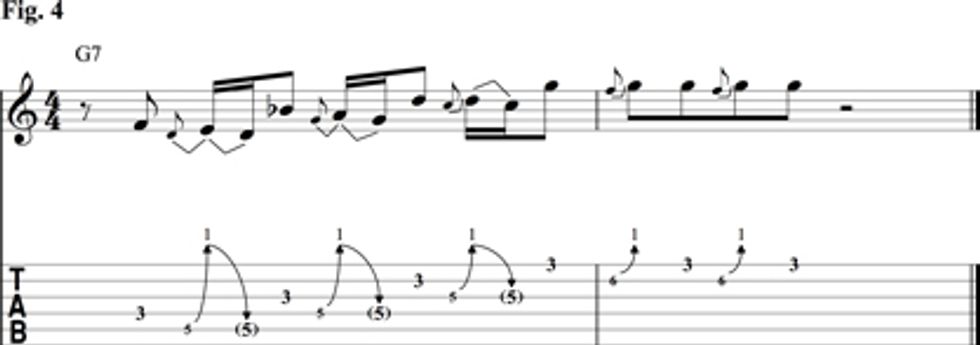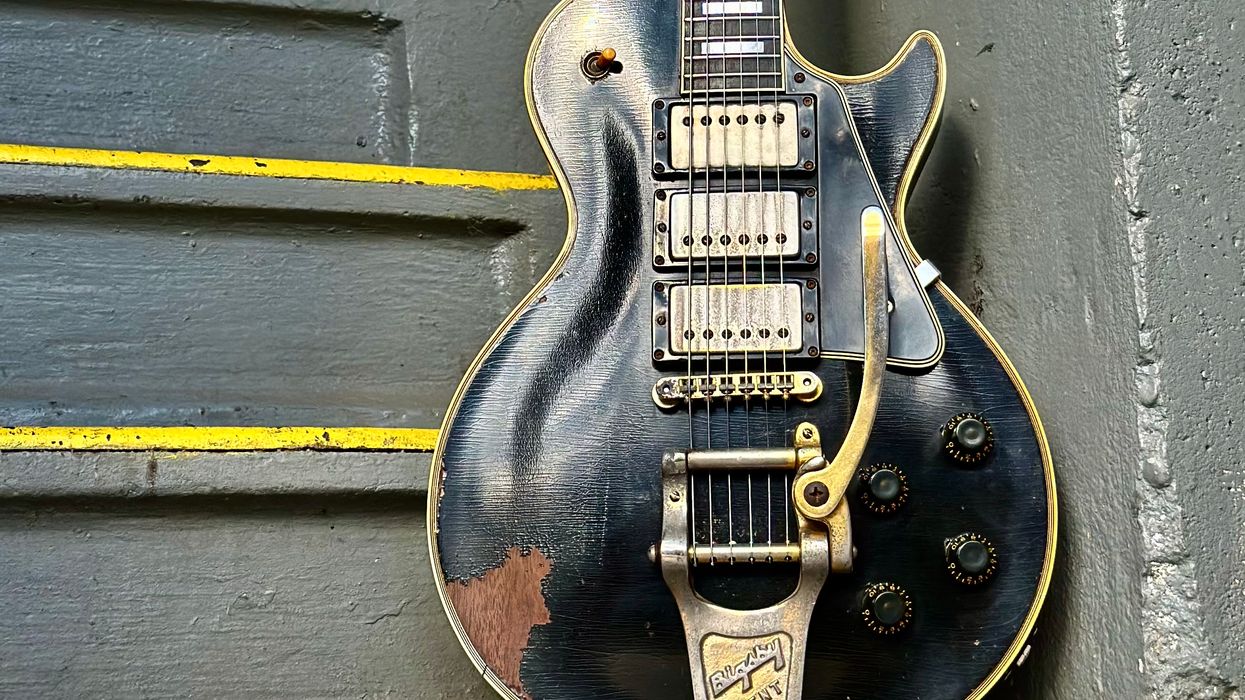Chops: Intermediate
Theory: Beginner
Lesson Overview:
• Understand the fundamental
elements of Jeff Beck’s style.
• Learn how to employ pedal
tones and combine major and
minor pentatonics.
• Create Beck-inspired phrases
using unusual bends.
One of the true great guitar innovators, Jeff Beck has been consistently improving and evolving since he first hit the scene with the Yardbirds. In this lesson, we’ll discuss his earlier playing style, focusing mainly on the era when he fronted the Jeff Beck Group. If you are not familiar with that period, I highly suggest picking up Truth and Beck-ola. With a young Rod Stewart as the lead vocalist, the Jeff Beck Group released their debut in 1968. This band was allegedly the impetus for Jimmy Page to seek out his own young blonde singer and form Led Zeppelin, which made their recording debut in 1969. We have Jeff Beck to thank for many things!
Beck’s playing is raw and full out on the band’s first two records, and we can really hear shades of what would come later in Blow by Blow and Wired. Truth and Beck-ola epitomize blues-rock—a sound he helped define. Let’s take a look at some signature Beck licks from that period.
In Fig. 1, we can see how Beck plays up the 3rd and 4th degrees of the G Mixolydian (G–A–B–C–D–E–F) mode. Beck uses the bluesy, yet bright Mixolydian sound quite a bit on such tracks as “You Shook Me” and “Shapes of Things.” Unlike the blues scale with its b3, Mixolydian has a natural 3 and therefore doesn’t have a minor tonality.

We can also see Beck’s awesome bending technique start to take root. He is sounding the 4 with a bend and releasing it to get the natural 3. Very cool and a great primer for what’s to come.
At the time, Beck favored flashy, pull-off licks like the one shown in Fig. 2. We can trace this kind of lick to his deep love of rockabilly music—Cliff Gallup in particular. In this lick we take advantage of the available open strings when mixing the major and minor blues scales. The open 2nd and 3rd strings work perfectly in the key of G while the fretted notes are from the G minor pentatonic scale (G–Bb–C–D–F). The mixing of major and minor pentatonic scales is an essential sound of the blues. For more on this topic, please check out my lesson in the June 2011 issue [“The Composite Blues Scale”]. Also, try some other open string licks in other keys. It’s a lot of fun to see what you can come up with by figuring out what open strings will work.

Fig. 3 is classic Beck and a staple of his vocabulary. It’s also a pain in the butt to play! On this lick we are using what is called a pedal tone, that is simply a repeated note that we keep coming back to in between other notes. The trick on this one is that we either have to use hybrid picking or just play it fingerstyle. At this point, Beck was still playing with a pick, so I can’t say for sure how he approached it. On this example, I’m using both my pick and fingers, but try it both ways to see what works best for you. To be honest, when tackling this lick, I just try to play it as fast as I can! That’s how I get it to sound like Beck. But be sure to practice it slowly to fine-tune the phrase, and remember that a metronome always helps. It ain’t easy!

The phrase shown in Fig. 4 is yet another demonstration of Beck’s genius. He takes a basic G minor pentatonic scale and adds in some cool bends to create this original sound. When we hear a lick like this played by someone else we refer to it as a “Beck” lick because prior to him we’d never heard anything like it. This one is also tricky due to the bends on the lower strings that take some hand strength. Like all licks, try this one in different registers on the neck. Also, take the idea of the lick and move it to different scales. In my next installment on Mr. Beck, we’ll take this concept further, just like he did.

It’s a great idea to stockpile licks like Fig. 5 so you can pull them out when needed. This one is a ripping lick and also a great excitement builder. Like most things Beck does, this one is a bit tricky due to the fast repeated bends, so take it slowly. Also pay close attention to muting. I suggest letting the first finger poke up a little so it touches the 2nd string to help mute and cut down on excessive string noise.

Next time we’ll dive into Beck’s mid- ’70s Blow By Blow and Wired period. Meanwhile, good luck and have fun with these examples.
 Jeff McErlain
Jeff McErlainJeff McErlain is a New York City-based guitar player, producer, songwriter, and educator. He performs regularly in NYC and abroad with his trio and blues band. Jeff has a number of instructional DVDs available at TrueFire.com, and he is a featured instructor for the National Guitar Workshop. Jeff's latest CD I'm Tired is available on iTunes or at jeffmcerlain.com.





![Rig Rundown: AFI [2025]](https://www.premierguitar.com/media-library/youtube.jpg?id=62064741&width=1245&height=700&quality=70&coordinates=0%2C0%2C0%2C0)
















